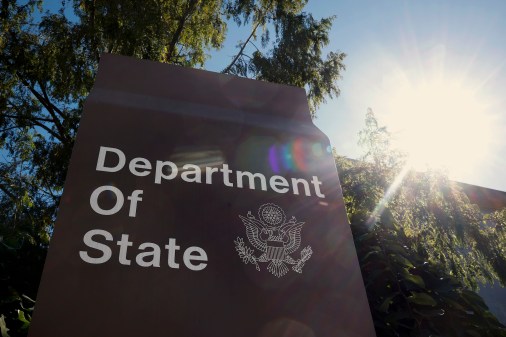Tony Scott: OMB FITARA guidance expected mid-May
Agency chief information officers can expect Office of Management and Budget guidance for the Federal Information Technology Acquisition Reform Act by mid-May, according to new federal Chief Information Officer Tony Scott.
Speaking Tuesday on a FITARA-focused panel hosted by the Association for Federal Information Resource Management, Scott said OMB’s final guidance should arrive publicly in the next six to eight weeks. Agencies already have a draft of the guidance.
“We’ve gotten just a ton of great input,” Scott said of the administration’s guidance on the new law. “Where we can see where people might be confused by something, we’ve attempted to clarify it.”
Alongside the guidance, Scott said he plans to publish a cover memo, which “will provide some context for not just FITARA but how it fits into an overall … framework that should be guidance in terms of not just CIOs but the whole organization.”
While many have narrowed in on FITARA’s expansion of CIO IT spending authority from the Clinger-Cohen Act of 1996, Scott said the new law is much more of a team effort. The hope is putting the IT budget in the hands of the CIO will make technology development and acquisition more effective.
“It’s also the conversation that we expect would take place among leaders of each agency and the CIO and his or her team in those agencies,” he said. “It’s really that conversation and alignment of viewpoints and strategies and so on that I think’s critically important. When there isn’t that kind of alignment, not only do you not get good IT, but business suffers as well.”
Putting the IT budget decision-making in the hands of a central CIO, though, will relinquish much of the autonomy among subcomponent agency CIOs and technology-related powers tied to chief financial officers in larger departments. In many respects, agency CIOs will have the biggest seat at the table they’ve ever had.
For this reason, Benjamin Rhodeside, a senior policy adviser to FITARA co-author Rep. Gerald Connolly, D-Va., said, “we need to ensure that we get the right people in those CIO positions.” And the increased authority leaves little question where the final IT decision lies short of the secretary level, he said, making sure “if we’re going to hold them accountable that they have the authorities that line up as well, not just at the [department] level but down to the component level.”
This sort of disruption likely won’t come without some resistance, and Department of Homeland Security Deputy CIO Margie Graves told the audience it’s important for CIOs and their agencies to work strategically within the new powers to find “the most important point at which to insert that authority so that you can influence … the outcome.”
Rhodeside said despite the grief it could cause some subordinate CIOs who are used to doing business under Clinger-Cohen, it’s now the law, and a powerful one.
“It is strong authority to assure that you will not have a situation where an agency CIO at the department level will be stuck with component agency CIOs who aren’t willing to play ball and who aren’t willing to recognize chain of command and clear lines of communication,” he said.
Of course, some larger departments and agencies will struggle less with the new law because they’ve always had a central CIO. Others, like Graves’ DHS, will face the challenge of a new chain of command and communication dynamic.
“Each agency is going to have a different implementation plan based on the way their governance structure operates today,” she said. DHS is still discussing where it would “most effectively” position its central CIO under FITARA.
But small agency or large, Rhodeside said, “There’s no excuse left anymore [for CIOs] to say ‘I don’t have [authority].'”
And regardless of when OMB’s guidance is released, Rhodeside reminded the audience that the law is here to stay. While OMB’s guidance is meant “to harmonize across government, to make sure it’s consistent,” he said, “This is the law — it was signed in and went in to effect.”






